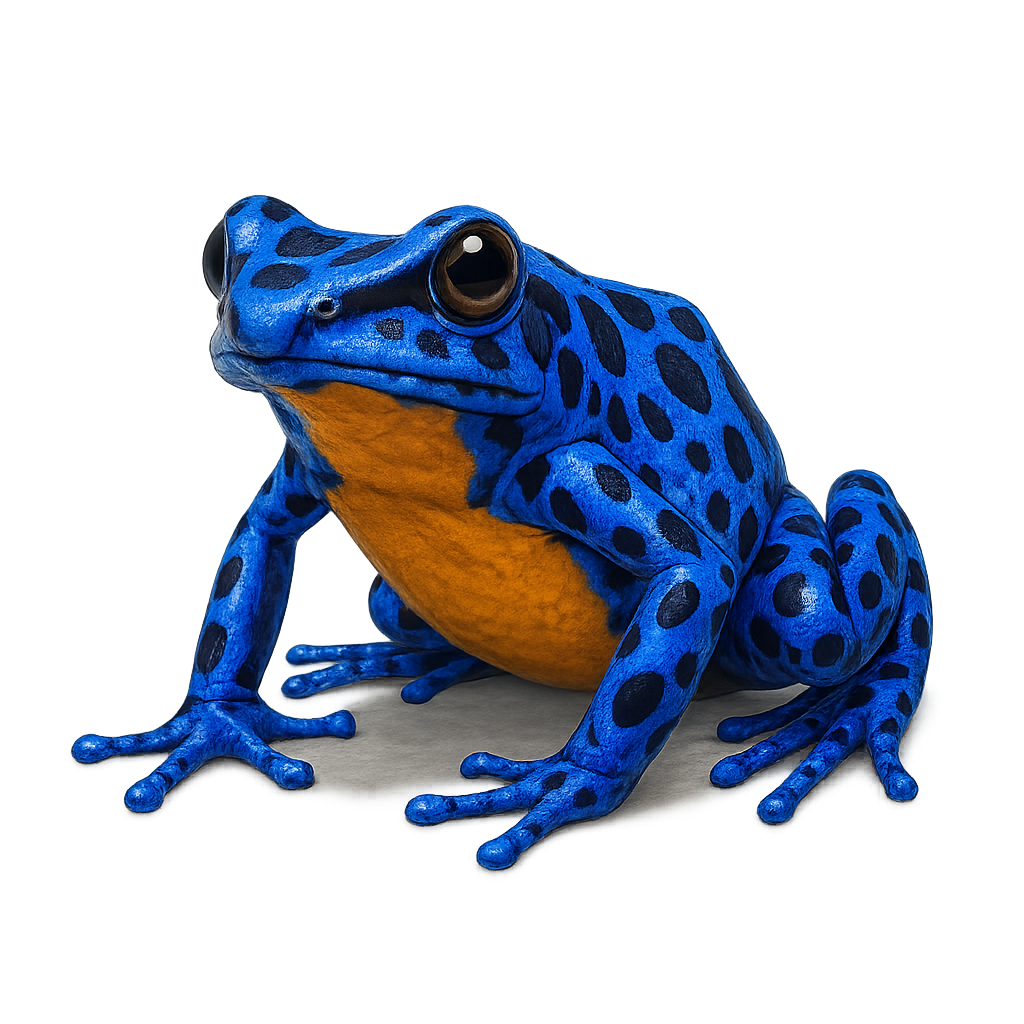Your wildlife photography guide.
Explore the azureus poison dart frog in detail, study its behavior, prepare your shots.
Where to observe and photograph the azureus poison dart frog in the wild
Learn where and when to spot the azureus poison dart frog in the wild, how to identify the species based on distinctive features, and what natural environments it inhabits. The WildlifePhotographer app offers tailored photography tips that reflect the azureus poison dart frog’s behavior, helping you capture better wildlife images. Explore the full species profile for key information including description, habitat, active periods, and approach techniques.
Azureus poison dart frog
Scientific name: Dendrobates tinctorius azureus

IUCN Status: Least Concern
Family: DENDROBATIDAE
Group: Amphibians
Sensitivity to human approach: Somewhat shy
Minimum approach distance: 3 m
Reproduction period: June to September
Incubation: 30-40 jours
Births: June to September
Habitat:
Humid tropical forests, swamp areas, and near streams
Activity period :
Primarily active during the day, with peak activity in the morning and late afternoon.
Identification and description:
The Azureus Poison Dart Frog is a brightly colored and striking species, known for its vivid blue color that varies in intensity. Native to the humid tropical forests of Guyana, Suriname, and Brazil, it is famous for its camouflage abilities and skin glands that secrete potent toxins, used for defense against predators. This frog is primarily terrestrial and lives in areas near streams and swamps, where it feeds on insects and other small prey. Due to its coloration, it serves as a warning signal to predators. It is primarily diurnal.
Recommended lens:
Macro – adjust based on distance, desired framing (portrait or habitat), and approach conditions.
Photography tips:
Photograph the Azureus Poison Dart Frog using soft lighting to capture its vivid color without disturbing it. Use a macro lens to capture the details of its smooth skin and unique patterns. Be discreet and photograph from a distance to avoid disturbing the animal. It is best to photograph it in its natural habitat, among dense vegetation or near streams where it resides.
The WildlifePhotographer App is coming soon!
Be the first to explore the best nature spots, track rutting seasons, log your observations, and observe more wildlife.
Already 1 432 wildlife lovers subscribed worldwide

